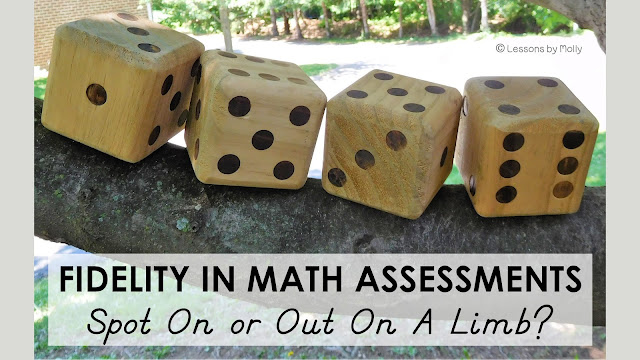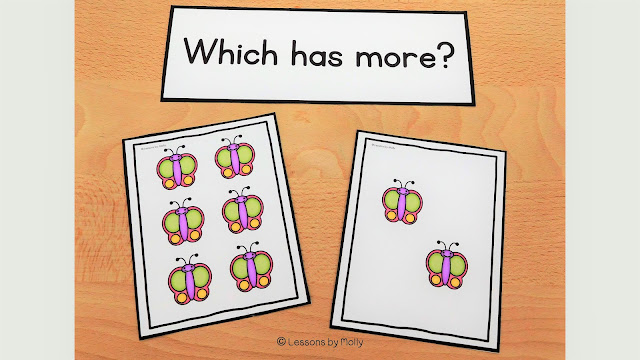This blog post will examine three fictitious examples of teachers checking students' understanding of a math standard highlighting the importance of adhering to the standard's guidelines. Can you identify the teacher who accurately administered the assessment to align fully with the intended standard shown below?
"The student, given no more than three sets, each set containing 10 or fewer concrete objects, will compare and describe one set as having more, fewer, or the same number of objects as the other set or sets."
The three educators mentioned below plan to assess the concepts of "more" with their students. They know that conducting multiple problems with different number combinations is essential to verify the students' understanding of "more." For this blog post, each scenario offers one problem. Fewer and same are omitted in these scenarios, but the underlying principles remain relevant in each case.
Mrs. Seegar's Approach
Mrs. Seegar evaluated her students' comprehension of comparing two sets by employing images of butterfly groups in her assessment. She presented two picture cards, one with six butterflies and the other with two butterflies. Some students correctly identified the group with six butterflies as having more. How did Mrs. Seegar perform with her assessment? Mrs. Seegar stayed within the number range, but her assessment fails to meet the standard's requirements since it utilizes images on picture cards instead of concrete objects.
Mr. Bishop's Approach
Similarly, Mr. Bishop evaluated his students' understanding of comparing two sets of numbers and their proficiency in describing the larger quantity as "more". He used cubes as concrete objects. He presents two groups of cubes, one with five and the other with seventeen cubes. Some students correctly identified the group with seventeen cubes as having more. How did Mr. Bishop perform with his assessment? This assessment falls short of the standard's expectation by exceeding the specified range of ten or fewer objects. Mr. Bishop employed concrete objects, but he failed to align his assessment with the specific requirements of the standard. Although the assessment appears to exceed the goal, the objective does not explicitly require counting the exact number of objects. Comparing the quantities of five and seventeen cubes visually may offer an advantage compared to closely aligned numbers, such as five and seven. Consequently, Mr. Bishop's testing method is insufficient for the standard's requirements within the given field of numbers.
Mrs. Riley's Approach
In contrast, Mrs. Riley conducted an assessment that targeted the desired learning objective. She placed eight small seashells on one paper plate and two larger seashells on another. Students correctly identified the group of eight seashells as having more. How did Mrs. Riley perform with her assessment? Mrs. Riley's assessment adhered to the standard by utilizing concrete objects and keeping the numbers within the specified range. Moreover, she effectively staged a potential cognitive conflict in the children's minds using the large seashells in the group with fewer objects. This strategy ensured that the students' responses were founded solely on the quantity rather than being influenced by the size of the objects.
Conclusion
Educators must ensure that their screening methods align fully with the intended standards they aim to measure. When assessing this standard, which focuses on comparing quantities, aligning assessments directly with the standard's guidelines is vital. The examples discussed above demonstrate the importance of using concrete objects, staying within the specified range, and ensuring that the assessments solely test the concept at hand. Mrs. Riley's approach is an accurate assessment that effectively measures the desired learning objective. By adhering closely to the standard, teachers can ensure that screenings provide a reliable measure of students' understanding. This data guides instructional decisions effectively and enables teachers to plan appropriate independent math centers, as discussed in the previous two posts. If you would like, view them here:
The Value of Independent Math Centers for Young Children
Common Misconceptions About Independent Math Centers and How to Overcome Them
© 2023 Molly McMahon, Lessons by Molly




No comments:
Post a Comment